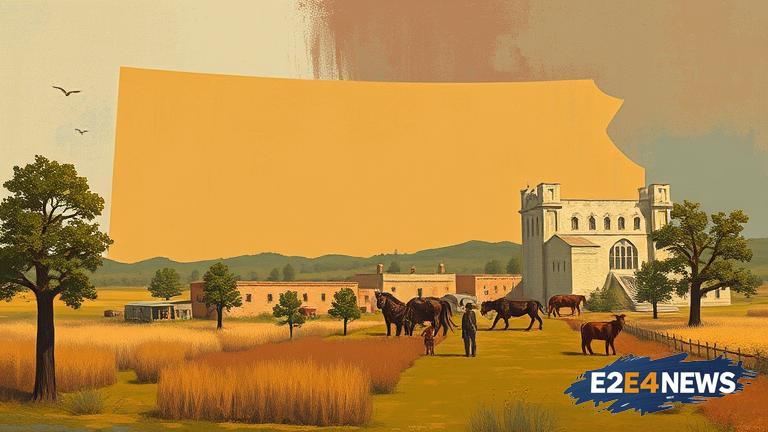Kansas, located in the heart of the United States, has a rich and diverse history that spans thousands of years. The state’s history began with the arrival of Native American tribes, including the Kansa, Osage, and Pawnee, who settled in the region due to its fertile soil and abundant natural resources. In the early 16th century, European explorers, such as Francisco Vásquez de Coronado, arrived in Kansas, marking the beginning of a new era in the state’s history. The Louisiana Purchase of 1803 led to the acquisition of Kansas by the United States, and the state became a territory in 1854. The Kansas-Nebraska Act of 1854 allowed the residents of Kansas to decide whether to allow slavery in the state, leading to a period of pro-slavery and anti-slavery violence, known as Bleeding Kansas. The state’s history is also marked by the construction of the Santa Fe Trail, which connected Kansas to New Mexico and played a significant role in the development of the state’s economy. The trail was used by thousands of settlers, traders, and travelers, who brought goods, ideas, and cultures to the region. The construction of the railroad in the late 19th century further transformed the state’s economy, connecting Kansas to the rest of the country and facilitating the growth of industries such as agriculture and mining. The state’s history is also characterized by the contributions of notable figures, such as Amelia Earhart, who was born in Atchison, Kansas, and became one of the most famous aviators in history. The Brown v. Board of Education decision in 1954, which declared segregation in public schools unconstitutional, was also a significant milestone in the state’s history. Today, Kansas is a thriving state with a diverse economy, rich cultural heritage, and stunning natural beauty, from the rolling hills of the Flint Hills to the scenic lakes and rivers of the eastern part of the state. The state is home to several world-class museums, including the Kansas Museum of History and the Spencer Museum of Art, which showcase the state’s history, art, and culture. Visitors to Kansas can explore the state’s many historic sites, such as the Brown v. Board of Education National Historic Site and the Fort Larned National Historic Site, which offer a glimpse into the state’s fascinating past. The state’s capital, Topeka, is also home to the Kansas State Capitol building, which features a stunning copper dome and offers guided tours. Kansas is also known for its vibrant arts scene, with numerous galleries, theaters, and music venues throughout the state. The state’s cuisine is also unique, with popular dishes such as Kansas City-style barbecue and Runza sandwiches. The state’s history and culture are also reflected in its many festivals and events, such as the Kansas City Jazz Festival and the Wichita Riverfest. Overall, Kansas is a state with a rich and diverse history, stunning natural beauty, and a thriving economy, making it an exciting and interesting place to visit or live. The state’s history is a testament to the resilience and determination of its people, who have shaped the state into what it is today. From its early settlement to its current status as a thriving state, Kansas has a story to tell, and its history is waiting to be explored. The state’s historic sites, museums, and cultural attractions offer a glimpse into the state’s fascinating past, and its natural beauty, vibrant arts scene, and unique cuisine make it a great place to visit or live. Whether you’re interested in history, culture, or outdoor activities, Kansas has something to offer, and its rich heritage and stunning natural beauty make it a must-visit destination.





